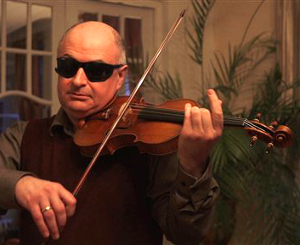Blind tests debunk beloved violin myth
 An experiment has been conducted to test the prestige of the world’s most famous violins.
An experiment has been conducted to test the prestige of the world’s most famous violins.
Stradivarius violins have been prized for their uniquely brilliant feel, quality and most important – sound, since they were first made by the Stradivari family in the 17th century.
But tests comparing twelve old and new violins, including 5 ‘Strads’, in the hands of ten world-class soloists have had a pretty surprising outcome.
The new violins won.
Stradivarius and other old Italian violins have a wealth of prestige, considered superior or almost mythological compared to modern instruments.
“Studying music and violin in particular, it's almost ingrained in your thinking that the most successful violinists on the concert stage have always played old Italian instruments,” said American violinist Giora Schmidt, a participant in the test.
But music and acoustics researchers wanted to know where this hallowed affection for old instruments comes from, and whether it is scientifically provable.
The study attempts to quantify something that is inherently subjective and personal - the quality of an instrument, said authors Joseph Curtin, a Michigan violin maker and Claudia Fritz, an acoustics researcher at the Pierre and Marie Curie University in France.
The duo gathered 10 violinists to put the instruments through their paces in a rehearsal room and concert hall just outside Paris.
They played with an orchestra, the lights were dimmed, and the musicians donned dark welder's glasses to ensure all they knew about the instrument came from its ‘feel’.
When the lights were turned down, all that could be judged was the sound. Some violins were made 300 years ago, others were just a few days old.
The 10 violinists were asked to rate the instruments for sound, playability, and other criteria, and then pick one that they would want to use on a concert tour.
The top choice out of a dozen old and new violins was a new one; the second choice was new too.
After they had whittled down their choices, the soloists were asked whether the remaining instruments were old or new. The musicians got it wrong 33 times and right 31 times.
Canadian soloist Susanne Hou has been playing a rare $6 million 269-year-old Guarneri del Gesu violin, but while playing blindfolded with a brand new instrument she said; “Whatever this is I would like to buy it.”
“I will write you a check for this fiddle right now,” another violinist said.
The authors of the report now published in the journal, Proceedings of the National Academy of Sciences, say they designed the test not to favour any particular instrument.
They have also refused to name any of the newer instruments in the test to prevent accusations of bias or marketing. This has greatly annoyed some of the soloists, who were looking to buy violins which were exponentially less expensive than their prestigious ancestors.









 Print
Print